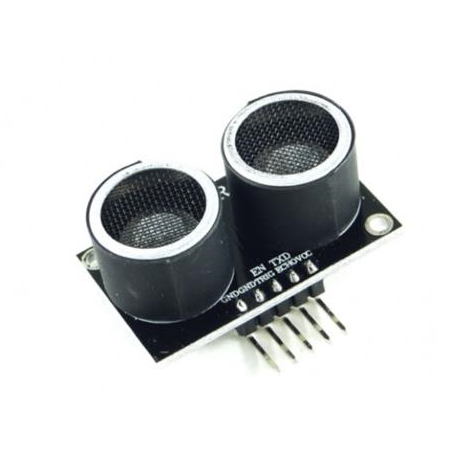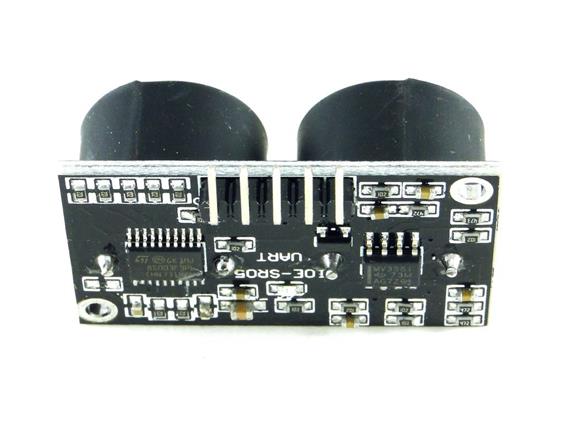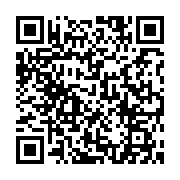IOE-SR05 Ultrasonic Ranging Sensor Module TTL Serial Output (5 PINS)




| รหัสสินค้า | SG00397 |
| หมวดหมู่ | LIDAR / เซ็นเซอร์วัดระยะทาง / ความเร็ว Distance / Speed |
| ราคา | 95.00 บาท |
| สถานะสินค้า | พร้อมส่ง |
| จำนวน | ชิ้น |
รายละเอียดสินค้า
1) small size, PCB board size is only 2.2 x 3.6CM , suitable for occasions with high dimensional requirements.
2) at least one IO data port can accept the hexadecimal data of the measured distance; with the data output enable end, can be controlled by IO port or directly grounded!
3) measuring distance cycle is only 18ms , greatly reducing the measurement time, especially suitable for robot control.
4) reached the theoretical no blind zone, basically no blind zone test range.
5) the over-range automatically returns AAAA data, reducing the waiting time after over-range.
6) there is a red LED on the back to indicate the working state, when there is an obstacle, the LED will light.
Ultrasonic ranging module wiring method:
5 2.54mm pitch pins:
VCC - wide voltage input: support 3v-5.5v
TxD - (serial output, connected to the microcontroller or TTL board RXD;)
Enable - (Enable end, 0 when the module works, = 1 does not work, PCB print Trig),
GND - power ground
GND - power ground
Data Format:
The module outputs 4 bytes at a time in the format: 0XFF+H_DATA+L_DATA+SUM
1 . 0XFF : is a set of start data for judgment.
2. H_DATA : The upper 8 bits of the distance data.
3. L_DATA : The lower 8 bits of the distance data.
4. SUM: Data and, for validation. Its 0XFF+H_DATA+L_DATA=SUM (lower 8 bits only)
Note: H_DATA and L_DATA synthesize 16-bit data, that is, the distance value in millimeters.
H_DATA * 256 +L_DATA
Overrange fixed output: FF AA AA 53
There is a red LED on the back to indicate the working status. When there is an obstacle, the LED will light up.
Electrical parameters:
|
Electrical parameter |
Ultrasonic module |
|
Operating Voltage |
DC 3.0-5.5V |
|
Working current |
8mA |
|
working frequency |
40KHz |
|
Ranging range |
0mm- 2000mm |
|
Resolution |
1mm |
|
Measuring angle |
Related to distance, see below angle |
|
Serial port baud rate |
9600,8,n,1 |
|
Response period |
18ms |
|
Standard sizes |
33*22*15mm high ( ultra-miniature) |
How to use this product: After confirming that the polarity and voltage of the power supply are connected, the module will automatically measure with a period of 18ms. If the echo is received, the protocol data containing the distance information (in mm) will be output through the TXD. The output is very stable.
How the module works:
(1) The module automatically sends eight 40khz square waves in a period of 18ms, and automatically detects whether there is a signal return;
(2) There is signal return, after internal calculation processing, the distance information is output through TXD;
Main features of the module:
(1) Ultra-miniature, only equivalent to two launches, the area of the receiving head, can no longer be smaller.
(2) No blind zone (larger triangle error within 12mm).
(3) The reaction speed is fast, and the measurement period of 18ms is not easy to lose high-speed targets.
(4) The transmitting head, the receiving head is close to the object, and is basically in a straight line relationship with the object to be measured (within 12mm or a large triangle, this is the emission, the physical shape of the receiving head is determined).
(5) There are LED indications on the module for easy observation and testing!
Frequently Asked Questions (faq):
1: Ultrasonic ranging principle
Ultrasonic waves are a kind of high-frequency sound with strong directivity. The principle of ultrasonic ranging is to use the propagation speed of ultrasonic waves in the air to be known. The time when the acoustic waves are reflected by the obstacles after the launch is measured, according to the transmission and reception. The time difference calculates the actual distance from the launch point to the obstacle. It can be seen that the principle of ultrasonic ranging is the same as the principle of radar.
The formula for ranging is expressed as: L = C × T
where L is the measured distance length; C is the propagation speed of the ultrasonic wave in the air; T is the time difference of the measured distance propagation (T is half the value of the transmission to reception time).
Ultrasonic speed C=344m/s (20°C room temperature)
Ultrasonic propagation velocity error
The propagation velocity of ultrasonic waves is affected by the density of air. The higher the density of air, the faster the propagation speed of ultrasonic waves, and the density of air is closely related to temperature. The approximate formula is: C=C0+0.607 ×T°C
where: C0 is 332 m/s when the temperature is zero;
T is the actual temperature (°C).
The 40khz ultrasonic wavelength is about 8mm, and the detection is the peak level, so it is easy to error one wavelength is 8mm, so it can't reach high precision, and don't care about the temperature influence (the temperature influence is second)
2: Why is the distance farthest only 2000mm?
This sensor is designed for small devices such as smart cars. It is suitable for small-scale, small space and closed space. As we all know, the ultrasonic transmission speed is low and the decay time is long. If the distance is pursued, the response time will be long and the target will be lost. In the closed occasions such as indoors, multiple emission oscillations will be formed, and the sensor will not work properly.
The problem of distance is analyzed from the reaction time of the sensor:
The speed of the ultrasonic air is about 340 meters per second, which is converted into milliseconds, which is 340mm/ms. If the detection distance is 2000mm, the distance of the detected echo is 4000mm, the transmission time of the ultrasonic wave is 12ms, plus the circuit delay, the energy delay of the sensor. , reserve some protection time (to let the last ultrasonic energy disappear), each measurement time is 18ms.18ms response speed is suitable for smart cars, high-speed sports will not lose the target.
Now there is a sensor in the market that is 5 meters. This 5 meter is the maximum distance. The detection target is generally a large emitting surface such as a wall surface. It is impossible for a small target to be achieved. Regardless of the distance of the small target, we are from the sensor. The reaction time is analyzed. The timing of this sensor is different from ours. It is received feedback and then fed back from Echo's pulse width, instead of feedback from the echo and trig time difference, so the sensor response Time has doubled! The response time of this 5 meter sensor is at least (the minimum time to calculate 1 meter is 6ms): 5*6*2=60ms! Even the fastest measurement cycle of 60ms can be applied to smart cars. Too slow! When the main control CPU detects the target, the car may have crashed!
3: Your ultrasonic transmitter and receiver are close together, why?
The ultrasonic sensor that everyone sees is generally divided between the transmitting and receiving heads because the closer the lateral wave energy of the transmitting head is to the receiving head, the larger the blind area becomes, and even the normal operation is not allowed. The difference between the head and the receiving head is not allowed, so the disadvantage of the belt is the transmitting head. The receiving head and the measuring object are connected by a triangle! It is obvious that the closer the distance, the larger the angle of the triangle, thus bringing The error is. The transmitter and receiver of our sensor are closely connected, and the detection target is parallel, not triangular.
4: Does your ultrasound module really have no blind spots?
The ultrasonic sensor ingeniously eliminates lateral interference waves, and the minimum measurement distance starts from zero.
5: Different objects have different measuring distances?
Yes! Because ultrasonic waves are sounds with higher frequencies, different materials and shapes have different absorption rates for sounds, and the reflection angles are different. Only the energy reflected to the receiving head (that is, the direction of ultrasonic emission) is detected. The effective measurement distances of different object measurements are different. In general, smooth objects (such as mirrors) have the longest reflection distance. Generally speaking, the maximum detection distance refers to such objects. The detection distance of small objects is very close, such as fine. Cotton thread, small in size, and absorbs sound, it is not detected.
The maximum detection distance of the actual object is listed below:
1. Ballpoint pen, 200mm
2. Hand, 400mm
3.1mm thick plastic sleeve wire, 30mm
4. Vernier caliper, 450mm
5. Human body (wearing thick clothes), 400mm
6. Wall surface, 2.200mm (maximum 2300mm, vertical measurement required)
7.1mm thick cotton thread, not detected
8. Bamboo toothpick, 40mm
6: Is there an application routine?
Yes, the output information of the serial port receiving module with 51 single chip microcomputer
#include "reg51.h"
#include "sio.h"
void main (void)
{
com_initialize (); /* initialize interrupt driven serial I/O */
com_baudrate (9600); /* setup for 9600 baud */
EA = 1; // Enable Interrupts
while (1)
{
Unsigned char head,dh,dl,sum;
Head = com_getchar();
If (head != 0xff) continue;
Dh = com_getchar();
Dl = com_getchar();
Sum = com_getchar();
Head = head + dh + dl;
If (head != sum) continue; //and checksum error
...now dh * 256 + dl is the measured distance value, and then further processing...
}
}
7: IO is nervous, can you use less IO?
The serial port mode has only used two IOs. The module does not receive data and only transmits. If less IO is required, the MCU can use only one RXD. At the same time, Enable is directly connected to GND (the module always works)
8: Need a shorter period of measurement, can you?
No, the module automatically measures in 18ms cycles.
9: What is the anti-interference?
The anti-interference performance is relatively strong. There are several measures in the design: 1. Minimize the input impedance, the higher the impedance, the easier it is to introduce interference; 2. The distance of the module design is relatively close, the signal amplification factor only meets this distance; 3. The general interference source The closer to the module, the easier it is to interfere. The module attenuates the signal at close range. After the actual test, the module does not produce interference for close-range noise (high-five, whistle, audio speaker), but strong mechanical vibration sometimes occurs. Interference (with strong harmonics, including 40khz component), so the ultrasonic module avoids hard connection with objects that may generate vibration, and can use rubber and other shock absorption in the middle, so that it can work reliably.
10: Detection angle?
The close-range detection angle is relatively large, about 60 degrees, the farther the distance, the smaller the detection angle, and the farthest point is close to 0 degrees.
11: Does the module have other interface methods?
There is another IO mode. Others such as IIC, SPI can be customized, but the most commonly used is IO and TTL interface mode, specifically consult the owner.
12: Can I use this module on my PC?
Can use a USB to TTL serial cable can directly connect this module (can not use RS232 serial port, the level is different, the use will burn out, the current PC does not have RS232 serial port), the module directly uses the USB power supply, very convenient. Please use the USB serial cable to learn from the owner.



วิธีการชำระเงิน
ชำระเงินค่าสินค้าโดยการโอนเงินเข้าบัญชีธนาคาร KBANK, SCB, BBL,TMB
กรุณาเก็บหลักฐานการโอนเงินของท่านไว้เพื่อแจ้งการชำระเงินด้วยค่ะ
ท่านสามารถแจ้งการชำระเงินผ่านระบบอัตโนมัติได้โดย Click Link ข้างล่างค่ะ
https://www.arduitronics.com/informpayment
ชำระเงินผ่านธนาคาร
SEARCH
CATEGORY
CONTACT US
Join เป็นสมาชิกร้านค้า
STATISTICS
| หน้าที่เข้าชม | 15,490,525 ครั้ง |
| ผู้ชมทั้งหมด | 5,993,603 ครั้ง |
| เปิดร้าน | 21 พ.ค. 2556 |
| ร้านค้าอัพเดท | 19 พ.ย. 2568 |
TRACK&TRACE
MEMBER
- ระดับ{{userdata.dropship_level_name}}
- ไปหน้าหลักตัวแทน
- ทั้งหมด {{(order_nums && order_nums.all)?'('+order_nums.all+')':''}}
- รอการชำระเงิน {{(order_nums && order_nums.wait_payment)?'('+order_nums.wait_payment+')':''}}
- รอตรวจสอบยอดเงิน {{(order_nums && order_nums.wait_payment_verify)?'('+order_nums.wait_payment_verify+')':''}}
- รอจัดส่งสินค้า {{(order_nums && order_nums.wait_send)?'('+order_nums.wait_send+')':''}}
- รอยืนยันได้รับสินค้า {{(order_nums && (order_nums.wait_receive || order_nums.wait_confirm))?'('+(order_nums.wait_receive+order_nums.wait_confirm)+')':''}}
- รอตรวจสอบข้อร้องเรียน {{(order_nums && order_nums.dispute)?'('+order_nums.dispute+')':''}}
- เรียบร้อยแล้ว {{(order_nums && order_nums.completed)?'('+order_nums.completed+')':''}}
- ทั้งหมด {{(order_nums && order_nums.all)?'('+order_nums.all+')':''}}
- รอการชำระเงิน {{(order_nums && order_nums.wait_payment)?'('+order_nums.wait_payment+')':''}}
- รอตรวจสอบยอดเงิน{{(order_nums && order_nums.wait_payment_verify)?'('+order_nums.wait_payment_verify+')':''}}
- รอจัดส่งสินค้า {{(order_nums && order_nums.wait_send)?'('+order_nums.wait_send+')':''}}
- ส่งสินค้าเรียบร้อยแล้ว {{(order_nums && order_nums.sent)?'('+order_nums.sent+')':''}}





